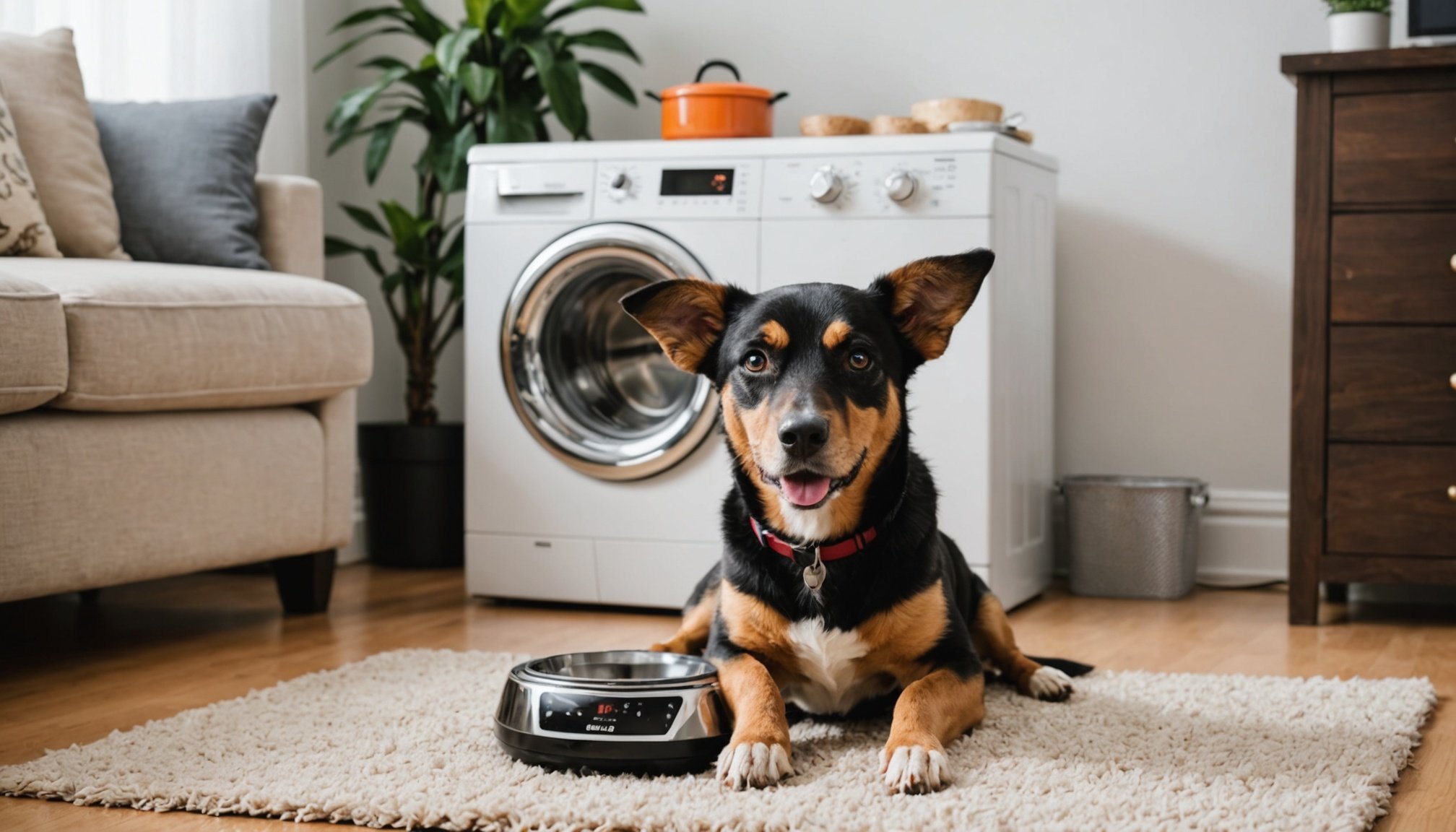Understanding Canine Noise Anxiety
Dog anxiety related to noise is a prevalent issue that can significantly affect a dog’s well-being. Noise sensitivity in dogs might arise from various environments or specific sounds. Common triggers include thunderstorms, fireworks, and household noises such as vacuum cleaners. Some dogs even react anxiously to less intense stimuli like doorbells or alarms.
Recognising the signs of canine behavior linked to noise anxiety is crucial. Dogs often display physical and behavioural changes such as trembling, excessive barking, or attempts to escape. Additionally, more subtle signs like panting, pacing, or hiding might indicate discomfort. Each dog’s response is unique, influenced by their temperament and past experiences. Dogs with a naturally nervous disposition tend to be more susceptible to noise-induced anxiety.
Also to see : Crafting the Ultimate Refuge: How to Design a Secure and Stimulating Habitat for Your African Grey Parrot
The impact of a dog’s temperament is a vital factor in understanding their reactions to noise. Dogs with a calm and confident nature may still experience some anxiety, but often show resilience, handling noise disturbances with relative ease. Conversely, dogs predisposed to anxiety might develop phobias that require careful management and targeted training.
Understanding these elements helps in addressing noise anxiety effectively, paving the way for improved canine behavior and overall harmony in a dog’s environment.
In parallel : Top techniques for reducing shedding in double-coated dog breeds: a comprehensive guide
Step-by-Step Training Techniques
Helping your dog overcome noise anxiety is a process, and step-by-step training techniques play a crucial role. Employing effective dog training methods like desensitization and coping strategies can make a substantial difference.
Gradual Sound Exposure
One foundational technique is gradual sound exposure. This involves introducing sounds in a controlled and systematic manner. Start with low volumes and short durations to prevent overwhelming your pet. Increase volume and duration gradually as your dog becomes more comfortable. The key here is patience; every dog progresses at their own pace. Consistency in training sessions helps dogs associate sounds with non-threatening experiences, fostering a more relaxed mindset.
Positive Reinforcement Methods
Positive reinforcement is pivotal in shaping desirable behavior. Use treats and praise to create positive associations with sounds. Timing is crucial—reward your dog immediately when they display calm behavior, reinforcing the idea that staying calm is beneficial. This method strengthens your dog’s ability to cope with anxiety-inducing noises.
Creating a Safe Space
A comforting environment plays an essential role in training. Create a safe space where your dog can retreat if they feel overwhelmed. A quiet room with their favourite blanket or toys can provide solace. Establishing such areas not only aids in training but also supports ongoing comfort during unexpected loud noises.
Utilizing Resources for Sound Desensitization
Understanding the techniques involved in sound desensitization requires the right tools and resources. Various solutions, such as calming music and sound machines, can assist in creating a soothing atmosphere for dogs experiencing noise anxiety. Calming music, specifically designed to reduce stress in dogs, operates by promoting a sense of peace through rhythmic and soft tones.
Sound machines are valuable sound desensitization tools, especially when replicating natural or household sounds that may cause anxiety. By playing these sounds at a lower volume, dogs can slowly adapt and become less reactive over time. These resources can be easily integrated into your daily routine, offering an accessible way to manage your dog’s noise sensitivity.
In addition, many training resources like videos and apps offer sound libraries that mimic certain noises, such as household appliances. These can be invaluable when practicing controlled exposure techniques. Engaging with community resources, such as online forums, also provides dog owners with shared experiences and advice.
Utilizing these comprehensive resources will facilitate effective sound desensitization and contribute to a harmonious environment for you and your dog. By diversifying your approach, you can find the combination that best suits your canine companion’s needs.
Case Studies and Success Stories
Real-life success stories can inspire and provide insights into effective training outcomes. Observing how others navigated similar journeys can guide you in managing your dog’s noise anxiety. Here’s a closer look at some case studies and what they’ve achieved.
Case Study: Overcoming Vacuum Cleaner Fear
In this instance, a dog named Max struggled with vacuum cleaner anxiety. His owner employed gradual sound exposure techniques, initially placing the vacuum at a distance while turned off. Over several weeks, they progressed to short, low-volume sessions. Positive reinforcement through treats when Max displayed calmness was crucial. As a result, Max now tolerates the vacuum calmly, significantly reducing his noise sensitivity.
Case Study: Acclimating to the Dishwasher
Bella, a nervous dog, was terrified of the dishwasher. Her owner used sound recordings of the dishwasher during mealtimes to integrate the noise gradually. Increasing exposure duration over time, supplemented by ample praise for calm canine behavior, proved effective. Bella now exhibits less stress and interacts more comfortably with her surroundings.
General Insights from Multiple Case Studies
Across these examples, common patterns emerge. Consistent training and patience often lead to successful anxiety management. Adaptability in training approaches is key, as each dog’s reaction can vary. Tailoring these methods ensures a personalised path to overcoming noise-related challenges.
Additional Tips for Long-Term Success
Maintaining consistent long-term strategies is crucial to effective anxiety management in dogs. Regular practice reinforces learned behaviors, ensuring your canine companion continues to feel secure. Integrating ongoing support helps solidify progress, making adjustments as needed to accommodate any changes in your dog’s environment or routine.
Recognising other potential sources of anxiety is as important as addressing noise-related issues. Dogs might develop anxiety due to separation or environmental changes, which can compound their response to noises. Remaining observant to shifts in behavior allows owners to identify and mitigate these additional stressors promptly.
In cases where self-guided efforts prove insufficient, seeking professional help is recommended. Consulting an animal behaviorist can provide tailored strategies and interventions specifically designed for your dog’s unique needs. They offer valuable insights into your dog’s psyche and effective ways to manage anxiety.
Consistency, attention to detail, and expert guidance create a solid framework for long-term success. This approach helps cultivate a healthier and more relaxed environment for both you and your dog, fostering resilience in the face of anxiety-inducing situations. By taking these steps, you can ensure your dog remains calm and comfortable in varied scenarios.







